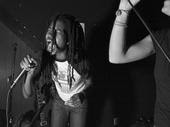
Text Via NY Times:
Irving Penn, one of the 20th century’s most prolific and influential photographers of fashion and the famous, whose signature blend of classical elegance and cool minimalism was recognizable to magazine readers and museumgoers worldwide, died Wednesday morning at his home in Manhattan. He was 92.
Mr. Penn’s talent for picturing his subjects with compositional clarity and economy earned him the widespread admiration of readers of Vogue during his long association with the magazine, beginning in 1943. It also brought him recognition in the art world; his photographs have been exhibited in museums and galleries and are prized by collectors.
His long career at Vogue spanned a number of radical transformations in fashion and its depiction, but his style remained remarkably constant. Imbued with calm and decorum, his photographs often seemed intent on defying fashion. His models and portrait subjects were never seen leaping or running or turning themselves into blurs. Even the rough-and-ready members of the Hell’s Angels motorcycle gang, photographed in San Francisco in 1967, were transformed within the quieting frame of his studio camera into the graphic equivalent of a Greek frieze.
Instead of spontaneity, Mr. Penn provided the illusion of a seance, his gaze precisely describing the profile of a Balenciaga coat or of a Moroccan jalaba in a way that could almost mesmerize the viewer. Nothing escaped the edges of his photographs unless he commanded it. Except for a series of close-up portraits that cut his subjects’ heads off at the forehead, and another, stranger suite of overripe nudes, his subjects were usually shown whole, apparently enjoying a splendid isolation from the real world.
He was probably most famous for photographing Parisian fashion models and the world’s great cultural figures, but he seemed equally at home photographing Peruvian peasants or bunion pads. Merry Foresta, co-organizer of a 1990 retrospective of his work at the National Museum of American Art, wrote that his pictures exhibited “the control of an art director fused with the process of an artist


No comments:
Post a Comment